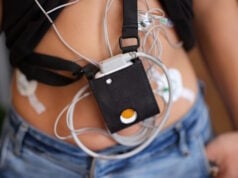
According to a recent Centers for Disease Control and Prevention (CDC) report, about 30.3 million people in the United States live with diabetes, which equates to almost one in 10 individuals.
The most commonly diagnosed form of diabetes is type 2 diabetes, which, more often than not, does not require insulin injections.
Instead, people with type 2 diabetes can manage their condition by taking the appropriate medication.
A drug that doctors often prescribe for this form of diabetes is metformin, which helps people keep their blood sugar levels under control.
As keeping blood sugar in check is so important in diabetes, endocrinologists advise people with this condition to perform regular, simple blood tests that they can do at home with the appropriate devices.
However, emerging evidence suggests that many people living with type 2 diabetes may be erring too much on the side of caution and taking these tests too often, without deriving any real benefits from doing so.
A new study by researchers from the University of Michigan in Ann Arbor suggests that a significant percentage of people with type 2 diabetes test their blood sugar levels at least twice a day.
These findings, which appear in the journal JAMA Internal Medicine, indicate that U.S. citizens or, in some cases, their insurance plans may pay excessive amounts of money for the supplies they require for unnecessary testing.
Too many prescriptions for test strips
Dr. Kevin Platt, who is in the Department of Internal Medicine at the University of Michigan, led a team who looked at the insurance data of 370,740 people with type 2 diabetes. The researchers specifically assessed how these individuals had been filling test-strip prescriptions for blood sugar tests following the updated guidelines that the Endocrine Society and Society of General Internal Medicine issued in 2013.
These guidelines recommended that people with type 2 diabetes reduced the frequency of at-home blood sugar level tests.
In their analysis, the researchers only looked at people with diabetes who did not require insulin or take medication that increases hypoglycemia (low sugar levels) risk. However, they did include people who took no medicine for the regulation of blood sugar, as well as those who took medicine that did not require them to check their blood sugar levels frequently.
The researchers found that “86, 747 (23.4 percent) of [the people in the study cohort] filled three or more claims for test strips during the course of the year.” They also noted that “more than half of these individuals,” equivalent to 51,820 people or 14 percent of the study population, were “potentially using the supplies inappropriately.”
Of these people, “32,773 individuals were taking agents not considered to be a risk for causing hypoglycemia (e.g., metformin hydrochloride) and 19,047 had no claims for any antidiabetic medications,” the authors write.












